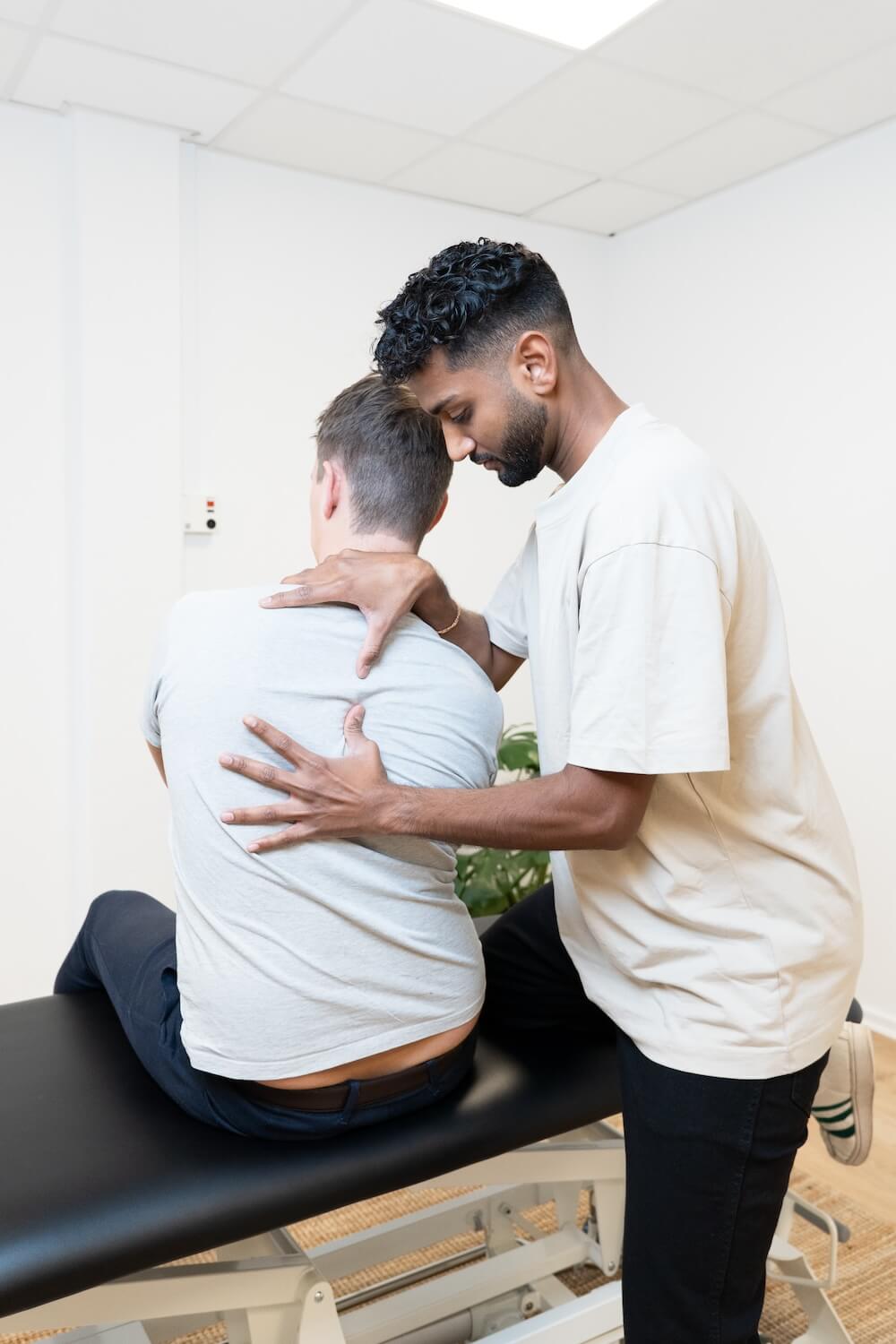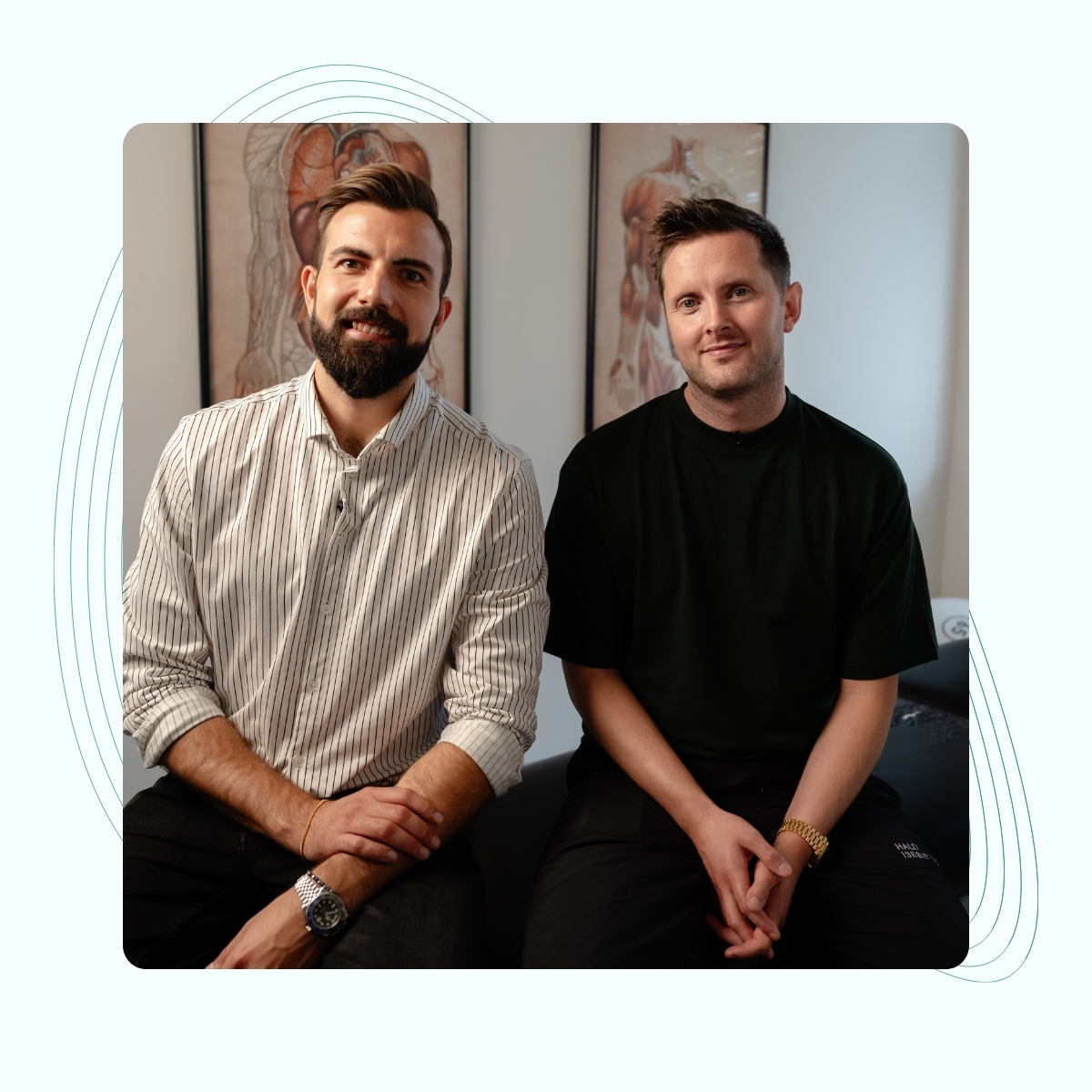We treat
Padel tennis injuries
Padel tennis injuries
Padel can often cause acute injuries, but one of the most common injuries seen in padel is overuse injuries. This is due to repetitive movements, especially quick turns and sharp turns, as well as incorrect technique, which can strain muscles, tendons and joints. To reduce the risk of overuse injuries, it is important to warm up thoroughly before each match or training session and make sure to recover to ensure the body is ready for the sport.
Let’s take a closer look at the most common injuries caused by padel and their treatment.
Jump to section [Vis]
Paddle injuries – shoulder
Causes of shoulder injuries
Shoulder impingement is a common injury that paddle tennis players can experience due to repetitive motion and stress in the sport. Impingement occurs when the tendons in the shoulder become pinched between the bones of the shoulder and the shoulder blade, which can cause pain, limited movement, and inflammation.
In padel, many of the strokes involve an overhead movement that requires significant movement in the shoulder joint. To ensure the best possible opportunity for the muscles above the shoulder, it is necessary to have good mobility in the thoracic spine, as the shoulder and thoracic spine are closely connected. The neck is also important as both blood circulation and nerves to the shoulder come from here. Over time, repetitive movements can lead to overload of the tendons and increase the risk of impingement. In addition, incorrect techniques and inadequate warm-up can further increase this risk.
Padel Tennis, injuries and prevention

Prevention of shoulder injuries
To prevent shoulder impingement during padel, it is important to focus on the following:
Warming up and mobility
Always start your padel training or match with a careful warm-up that includes dynamic exercises for the shoulder and upper body, as well as the neck. Mobility and stretching of the shoulder muscles after the game can also help reduce tension and improve flexibility around the joint.
Technique
Work on your technique to minimize the strain on the shoulder joint during swings and impacts. Focus on using your entire body in your movements and avoid overexerting the shoulder by relying too much on the shoulder muscles but use the power throughout the body and movement.
Body pattern and biomechanics
An osteopath can evaluate the player’s body and movement patterns to identify any biomechanical dysfunctions that may be contributing to shoulder pain. Through manual adjustments and exercises, an osteopath can help correct these problems and reduce the risk of repetitive injuries.
Strength training
Strengthen the muscles around the shoulder with specific exercises that target the rotator cuff and shoulder stabilizers. Stronger muscles can help protect the shoulder from overuse and impingement.
Equipment
Choose a bat that suits your playing style and technique, and make sure it’s not too heavy or unwieldy. Proper equipment can help reduce the strain on your shoulder joint during play.
Rest and recovery
Listen to your body and give it adequate rest and recovery between training sessions and matches. Overtraining and lack of recovery can increase the risk of injuries, including impingement.
Osteopathy
An osteopath will develop a customized treatment plan based on the client’s unique needs and goals. This may include a combination of manual therapy, exercises, nutritional counseling, and lifestyle changes to optimize the healing process and prevent future injuries.
Paddle injuries – elbow
Tennis, padel & golf elbow
Tennis/Padel elbow, also known as lateral epicondylitis, is the most common overuse injury experienced by padel players (Source: Springer). Although the name suggests it is primarily associated with tennis, the condition can also occur in padel players due to the repetitive arm movements required in the sport. The pain is located on the outside of the elbow.
Tennis elbow occurs when the tendons in the elbow become overused, which can lead to pain and tenderness on the outside of the elbow, as well as reduced grip strength and range of motion. The tissue around the elbow is particularly stressed by backhand and smash shots, as well as by incorrect grip technique, and this can strain the muscles and tendons in the forearm and elbow and lead to overuse injuries.
Overload can also occur due to excessive strain on the tissue due to lack of recovery.

Preventing elbow pain
To prevent golfer’s elbow in padel, it is important to focus on:
Warming up and mobility
Always start your padel training or match with a careful warm-up that includes specific exercises for the forearm and elbow as well as the shoulder. Mobility and stretching of the muscles in the forearm and elbow before and after the game can also help reduce tension and improve flexibility. In addition, perform upper body mobility as this ensures full mobility and good nerve and blood supply to the forearm/elbow.
Technique
Work on your technique to minimize the stress on the elbow during swings and shots. Focus on using your whole body in your movements and avoid excessive wrist movement, which can increase stress on your elbow.
Body pattern and biomechanics
An osteopath can evaluate the player’s body and movement patterns to identify any biomechanical dysfunctions that may be contributing to elbow pain. Through manual adjustments and exercises, an osteopath can help correct these problems and reduce the risk of elbow injuries.
Strength training
Strengthen the muscles around the elbow and forearm with specific exercises that target these areas, such as grip strength, forearm strengthening, and muscle stretching. Stronger muscles can help stabilize the elbow and reduce the risk of overuse injuries.
Using correct equipment
Choose a bat that suits your playing style and technique, and make sure the grip is properly adjusted for your hand size. Using an overgrip can also help reduce strain on your elbow during play.
Rest and recovery
Listen to your body and give it adequate rest and recovery between training sessions and matches. Overtraining versus lack of recovery can increase the risk of injuries, including golfer’s elbow.
Professional advice
Osteopathy can be an effective approach to both treating and preventing elbow pain in padel. Osteopaths use a variety of manual techniques to improve range of motion, relieve pain, and reduce inflammation in the area. By evaluating the biomechanics of the whole body, osteopaths can also identify and treat underlying causes of elbow injuries, such as muscular imbalances or dysfunctions in the body. Through a combination of osteopathic techniques, exercises, and prevention advice, osteopathy can help padel players maintain a healthy body and improve their performance on the court.
By being aware of these preventive measures, padel players can reduce the risk of golfer’s elbow and continue to enjoy the sport in a safe and long-lasting way.
Paddle injuries – the hands
Causes of hand injuries
Hand injuries in padel are not uncommon due to the intense and repetitive movements of the sport. These injuries can range from mild sprains to more serious conditions such as tendonitis, nerve compression or fractures. Understanding the causes of hand injuries in padel and how osteopathy can help in treatment is essential for both prevention and rapid healing.
Sprains and fractures occur from trauma, most often from a fall on the hand, but this rarely occurs in relation to overuse injuries to the hand such as tendonitis or nerve damage in the hand. Overuse injuries most often occur from repeated hitting movements where you do not have the correct grip technique on the bat, so the load becomes greater on the muscles and tendons in the hand and forearm and can thus cause tendonitis. Symptoms can be sharp pain, redness and warmth in the area.
Symptoms of nerve damage in the hand can include tingling and numbness in the fingers and decreased grip strength. This can be caused by incorrect grip technique, but also if the bat is too top-heavy for the player, it will cause greater vibrations in the wrist and thus affect the nerves.

Osteopathic treatment of hand injuries
Osteopathy offers a holistic approach to treating hand injuries, involving both direct treatment of the injury site and an assessment of the whole body biomechanics to find and treat underlying causes of the injury.
Here’s how osteopathy can help:
Osteopathic techniques
The osteopath uses various techniques such as manipulations and mobilization techniques to improve movement in the wrist, fingers and small joints of the hand. This helps to reduce pain and swelling and improve blood flow. In addition, the osteopath will try to restore optimal nerve and blood circulation to the hand. Blood circulation and nerve supply to the hand comes from the neck and thoracic spine. The osteopath assesses the whole body, which means they can identify and treat other areas that may be contributing to hand injuries, such as shoulder or back and neck problems.
Rehabilitation exercises
- Strengthening and stretching exercises: The osteopath will recommend specific exercises that strengthen the muscles and tendons in the hand and wrist. Stretching exercises can also help maintain flexibility and prevent further injury.
- Proprioception training: Exercises that improve the body’s ability to perceive and respond to movement can help prevent future injuries by improving coordination and balance.
Preventive advice
- Technique: A padel coach can advise on proper technique and grip on the racket to reduce stress on the hand. They can also recommend appropriate equipment, such as grips that reduce vibration.
- Warm-up and Stretching: Guidance on proper warm-up and stretching before and after games can help prepare muscles and tendons for the strain, thus reducing the risk of injury.
By integrating osteopathy into the treatment and prevention of hand injuries, padel players can achieve a more holistic and effective approach to staying injury-free, allowing them to continue playing at a high level and enjoying the sport without unnecessary interruptions.
Paddle injuries – knee
Causes of knee pain
Knee pain is one of the common symptoms that can occur during padel. For example, jumper’s knee, pain under the kneecap, is a common overuse injury that can affect padel players and their performance on the court. The repetitive movement and strain on the knee during the game, including running, jumping and rapid changes of direction, can lead to irritation and inflammation of the knee joint and surrounding tissues, causing sharp pain.
Studies have shown a link between padel tennis and the risk of developing jumper’s knee. A study published in the journal “Sports Medicine” found that padel tennis players have a high incidence of knee-related injuries, including jumper’s knee, due to the repetitive strain on the knee joint during play. (Source: National Library of Medicine).
For padel players suffering from jumper’s knee, it can be a challenge to continue playing at a high level and avoid further injury. Therefore, it is important to implement preventive measures and treatment strategies to manage this condition:

Prevention of knee injuries
Correct technique
Work on maintaining a stable and balanced posture during play to reduce stress on your knees. Using proper technique for executing turns, jumps, and changes of direction can also help minimize the risk of injury.
Manual therapy
Osteopathic techniques, such as manipulations and mobilization of the knee joint and surrounding tissues, can help restore optimal motion and function to the knee. This can relieve pain, reduce inflammation, and improve blood circulation to the area, which promotes the healing process.
Body pattern and biomechanics
An osteopath can evaluate the player’s body and movement patterns to identify any biomechanical dysfunctions elsewhere in the body that may be contributing to jumper’s knee. Through manual adjustments and exercises, an osteopath can help correct these problems and reduce the risk of repetitive injuries.
Strength training and stability
Osteopathy can be integrated with strength training and stability exercises designed to strengthen the muscles, tendons, and ligaments surrounding the knee. This can improve stability and function of the knee and reduce the risk of injury.
Flexibility training
Regular mobility training of the back and hips, feet, and stretching of the front thighs, back thighs, and calf muscles can improve flexibility and mobility in the knee joint, which can reduce the strain on the joints during play.
Equipment
Choose a pair of shoes that are adapted for padel to get the right support from the feet and to the knees. Proper equipment can help reduce the strain on the knee during the game.
Pain relief and stress management
Osteopathic techniques can help relieve pain and reduce stress levels in the body, which can help improve the healing process and reduce the risk of recurring injuries.
Individual treatment plan
An osteopath will develop a customized treatment plan based on the client’s unique needs and goals. This may include a combination of manual therapy, exercises, nutritional counseling, and lifestyle changes to optimize the healing process and prevent future injuries.
By integrating osteopathy into the treatment and prevention of jumper’s knee in padel players, a holistic approach can be achieved that addresses both symptoms and underlying causes of injury. It is important to remember that proper warm-up, training and technique are essential to minimize the risk of injury and promote long-term health and well-being on the court.
Paddle injuries – hip
Causes of hip pain
Hip pain is a common concern among padel players, as the sport involves many quick movements, changes of direction, and explosive actions that can strain the hips. These movements can lead to overuse and injury. Here’s a look at how hip pain can occur in padel, and how it can be prevented and treated.
Overload
Padel requires repetitive movements such as changing directions, jumping and rapid accelerations, which can strain the hip joints and the surrounding muscles and tendons. Overuse of the hips can lead to inflammation and pain in the hip flexors, external hip tendons and joint capsule.
Muscle imbalance and reduced mobility
Uneven strength or flexibility in the hip and leg muscles can lead to poor mechanics and increased strain on the hips. Weak gluteal muscles or reduced mobility in the hip flexors can worsen hip pain by changing the load distribution during movement. Reduced mobility around the hips and especially the upper body will increase the load through the hip. Virtually all paddle strokes involve rotation of the upper body and through the hips. Lack of upper body rotation will therefore increase the load on the hip and increase the risk of hip injuries.
Joint and cartilage injuries
Intense training and playing can result in injuries to the hip joint, including labral tears and osteoarthritis. These injuries can lead to pain, stiffness, and decreased range of motion in the hip.

Prevention and treatment of hip pain
Warm-up and stretching
A thorough warm-up and dynamic stretching exercises can improve blood flow to the hip area and prepare the muscles and tendons for activity. Focusing on stretching exercises for the hip flexors, glutes, and hamstrings can help maintain flexibility and reduce the risk of injury. Additionally, warming up and improving spinal mobility will reduce stress on the hip.
Strength training
Regular strength training that focuses on the hip and leg muscles can improve stability and reduce stress on the hip joints. Exercises like squats, lunges, and hip flexions can strengthen the large muscle groups around the hip.
Technique and mobility exercises
Working with a coach to improve playing technique and movement patterns can help reduce unnecessary stress on the hips. Proper footwork and posture during play are crucial to avoiding injury.
Treatment of hip pain
Osteopathy can be an effective treatment for hip pain by using gentle manipulations and mobilization techniques to improve range of motion and reduce pain. The osteopath assesses the biomechanics of the whole body, which can help identify and treat underlying causes of hip pain, such as poor posture or muscle and joint imbalances.
Osteopathy can also include advice on exercises and lifestyle changes to prevent future injuries and maintain optimal hip function. By implementing these preventive and treatment strategies, padel players can reduce the risk of hip pain and ensure they can continue to play at a high level without unnecessary interruptions.
Paddle injuries – feet
Causes of foot and ankle injuries
Ankle injuries are one of the most common injuries among padel players due to the sport’s demands for quick changes of direction, jumps and sudden movements (Source: MDPI). These movements can put significant strain on the ankle and lead to various types of injuries. Injuries such as acute ankle sprains are the most common ankle injuries, but there are also other overuse injuries such as Achilles tendonitis.
The most common ankle injury is a sprain. This occurs when the ligaments in the ankle are stretched or torn. This can also cause a stretching of the muscles and tendons around the ankle and lower leg, which can cause pain along the shin bone. Over time, this can cause inflammation in the tendons around the foot, such as the Achilles tendon.
The Achilles tendon is often the place where padel players get their overuse injuries, as the tendon has to withstand loads through the foot when changing direction and moving quickly. In addition, too much training and competition compared to recovery will increase the risk of overuse of the Achilles tendon.
The symptoms of pain in a tendon are often sharp pain when starting after rest, better after warming up and after a training/match, the symptoms in the tendon will flare up again.
In the worst case scenario, acute trauma to the foot can result in bone fractures.

Preventing foot and ankle injuries
Proper warm-up
A thorough warm-up that includes dynamic stretching exercises and light running can prepare the ankles, muscles and tendons for the strain during the game.
Balance training
By training your senses, both visual, vestibular and proprioceptive, you can improve your balance in your feet and ensure better coordination in your body when changing directions quickly, thus preventing ankle injuries.
Strength training
Strengthening the muscles and Achilles tendon around the ankle, including the calf muscles and the small stabilizing muscles, can help protect the joint.
Wearing proper footwear
Shoes designed specifically for padel, which provide good support and grip, can reduce the risk of injury.
Osteopathy
Osteopathy can be an effective approach to both treating and preventing ankle injuries in padel. Osteopaths use a variety of manual techniques to improve range of motion, relieve pain, and reduce inflammation in the area. By evaluating the biomechanics of the whole body, osteopaths can also identify and treat underlying causes of ankle injuries, such as muscular imbalances or dysfunctions in the body. Through a combination of osteopathic techniques, exercises, and prevention advice, osteopathy can help padel players maintain a healthy body and improve their performance on the court.
By implementing these strategies, padel players can reduce the risk of ankle injuries and ensure they remain active and injury-free, which is essential for enjoying and performing optimally in padel.
Paddle injuries – lower back
Causes of low back injuries
Low back pain is a common concern among padel players due to the sport’s repetitive movements and demands for rapid changes in direction. When playing padel, the lumbar region is often subjected to stress from bending to catch the ball, extending the back during overhead strokes, rotating the body during strokes, and the rapid, intense movements on the court. This places great demands on freedom of movement throughout the spine, as well as the pelvis and hips, to ensure that the entire body is used and not just the lower back, which is stressed by the movements.
For example, reduced mobility in the thoracic spine can lead to increased strain on the lower back.
Furthermore, considerable stability is required around the spine, where small stabilizing muscles around the vertebrae as well as large dynamic muscles such as the hip flexors play an important role. Repetitive straining movements can lead to overload of the muscles, tendons and joints around the spine, resulting in low back pain.

Prevention and treatment of low back pain
Correct technique
Focus on maintaining a stable and balanced posture during play to reduce strain on your lower back. Using proper technique for executing turns, jumps, and changes of direction can also help minimize the risk of back injuries.
Osteopathy
Osteopathic techniques, such as manipulations and whole-body mobilization, can help restore optimal movement throughout the spine, thereby relieving pressure on the lower back. This can relieve pain, reduce inflammation, and improve blood circulation to the area, which promotes the healing process.
Body pattern and biomechanics
An osteopath can evaluate the player’s body and movement patterns to identify any biomechanical dysfunctions that may be contributing to lower back pain. Through manual adjustments and exercises, an osteopath can help correct these problems and reduce the risk of repetitive injuries.
Balance
Train your balance to improve your back. There are specific reflexes in our brain that are directly connected to our coordination system in the body. One of them activates our core muscles during movements. When we train our balance, we become better at coordinating movements in the body and thus also protect our back.
Strength training and stability
Osteopathy can be integrated with strength training and stability exercises designed to strengthen the muscles, tendons, and ligaments that surround the back. This can improve the stability and function of the back and reduce the risk of injury.
Flexibility training
Regular mobility training of the upper body, lower back, hips, and stretching of tense muscles around the area will reduce the strain on the lower back.
Equipment
Choose a pair of shoes that are adapted for padel to get the right support from the feet and from the knees up to the back. Proper equipment can help reduce the strain on the lower back during the game.
Pain relief and stress management
Osteopathic techniques can help relieve pain and reduce stress levels in the body, which can help improve the healing process and reduce the risk of recurring injuries.
Individual treatment plan
An osteopath will develop a customized treatment plan based on the player’s unique needs and goals. This may include a combination of osteopathic techniques, exercises, nutritional advice and lifestyle changes to optimize the healing process and prevent future injuries.
Padel injuries – the gastrointestinal system
Why isn’t my abdominal injury healing?
Nutrition and healing
The gastrointestinal system plays a crucial role in the absorption of nutrients necessary for the healing of muscle injuries. A healthy and balanced diet rich in proteins, vitamins, minerals and antioxidants can help speed up the healing process after an injury and reduce inflammation. However, a lack of essential nutrients or problems with digestion can delay the healing process and increase the risk of overuse injuries.
Inflammatory response
The gastrointestinal system is closely linked to the body’s inflammatory response, and imbalances in the gut flora or digestive problems can lead to excessive inflammation, which can worsen muscle damage and delay the healing process. A healthy gastrointestinal system can help regulate inflammation and promote a faster and more effective healing process.
Stress and recovery
Stress, both physical and mental, can affect both the gut and muscle damage. Excessive exercise or lack of rest can lead to digestive problems and worsen muscle damage. At the same time, stress can also increase inflammation and delay the healing process. Prioritizing adequate rest and recovery, both physical and mental, is essential to promote healing and recovery.
Medicines and supplements
The use of certain medications or supplements to treat muscle injuries can affect the gastrointestinal system. For example, nonsteroidal anti-inflammatory drugs (NSAIDs) can cause stomach irritation or ulcers, while certain supplements can have a negative effect on digestion or gut flora. It is important to be aware of these potential side effects and consult a doctor or nutritionist about the best approach to treatment.

Osteopathy and the gastrointestinal system
Osteopathy recognizes the connection between the body’s various systems, including the gastrointestinal system and the musculoskeletal system. An osteopath will assess the client’s overall health and identify any imbalances or dysfunctions that may affect both the intestinal system and muscle damage. Through manual techniques, an osteopath can work to improve digestion, regulate inflammation, and support the body’s natural healing process.
Overall, a healthy digestive and gastrointestinal system is important for both preventing and healing muscle injuries. Maintaining a balanced diet, managing stress, and prioritizing adequate rest and recovery can all help support both gastrointestinal health and the muscle healing process.

Often related problems
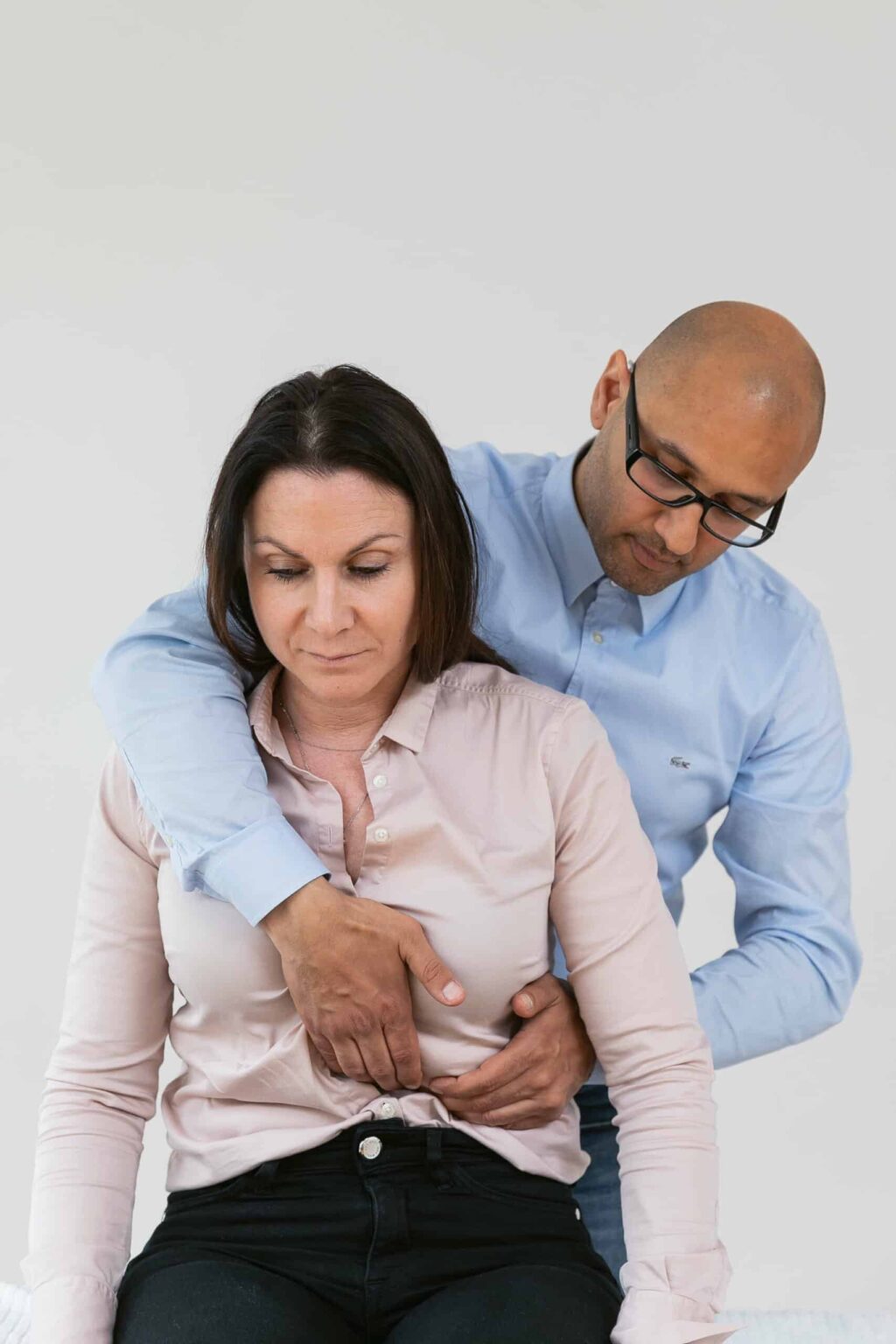
Side stitch
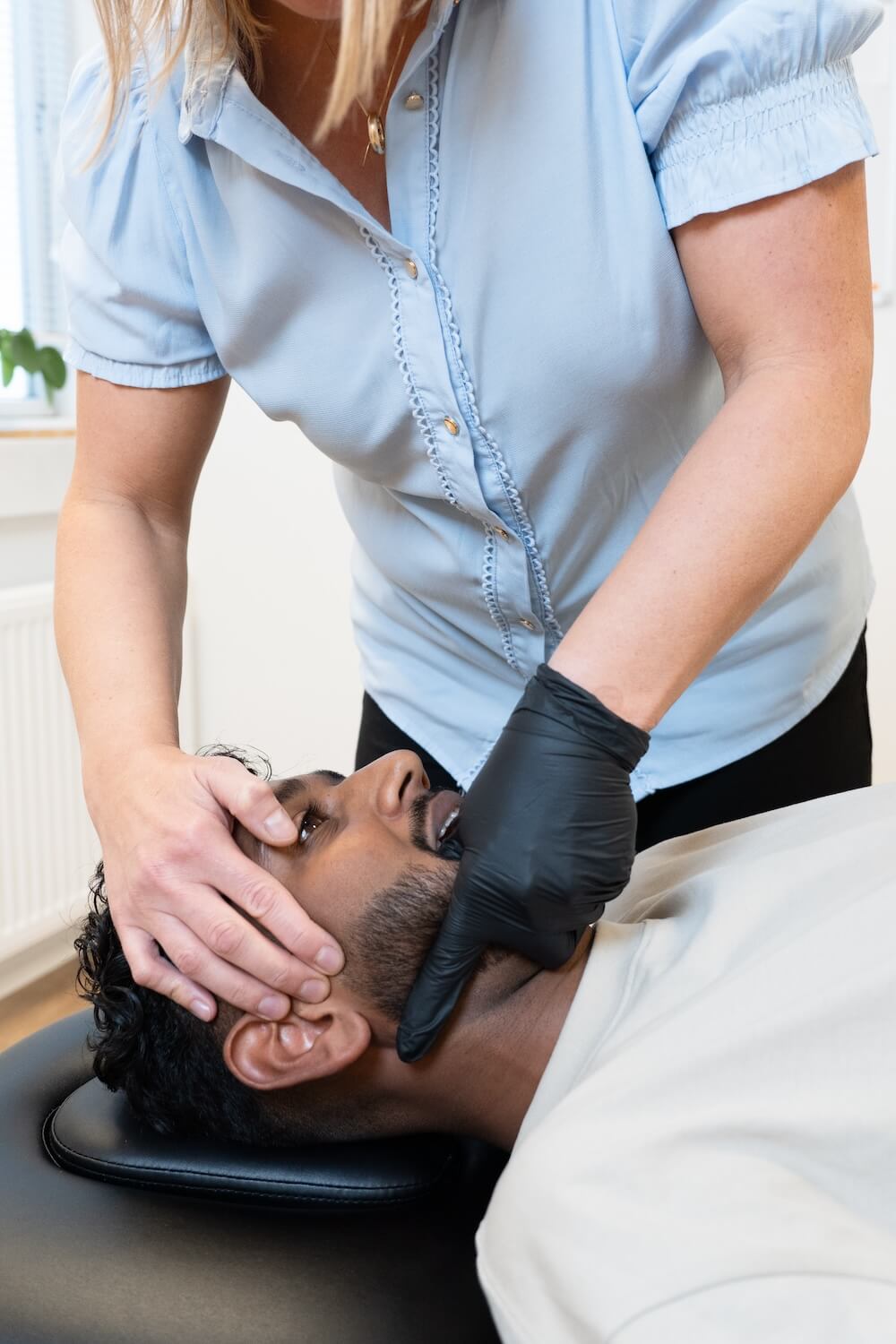
Kissing disease
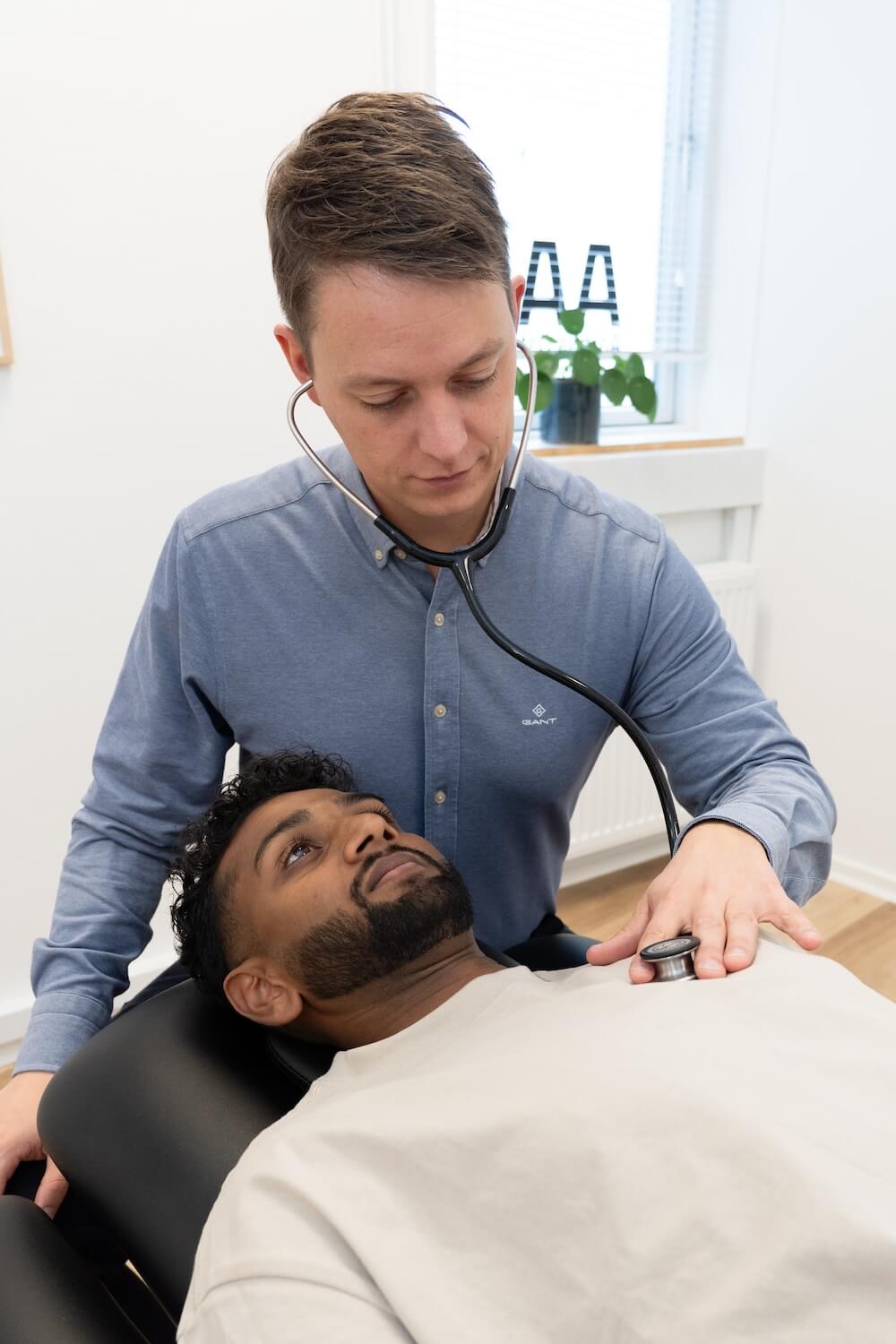
Diabetes mellitus
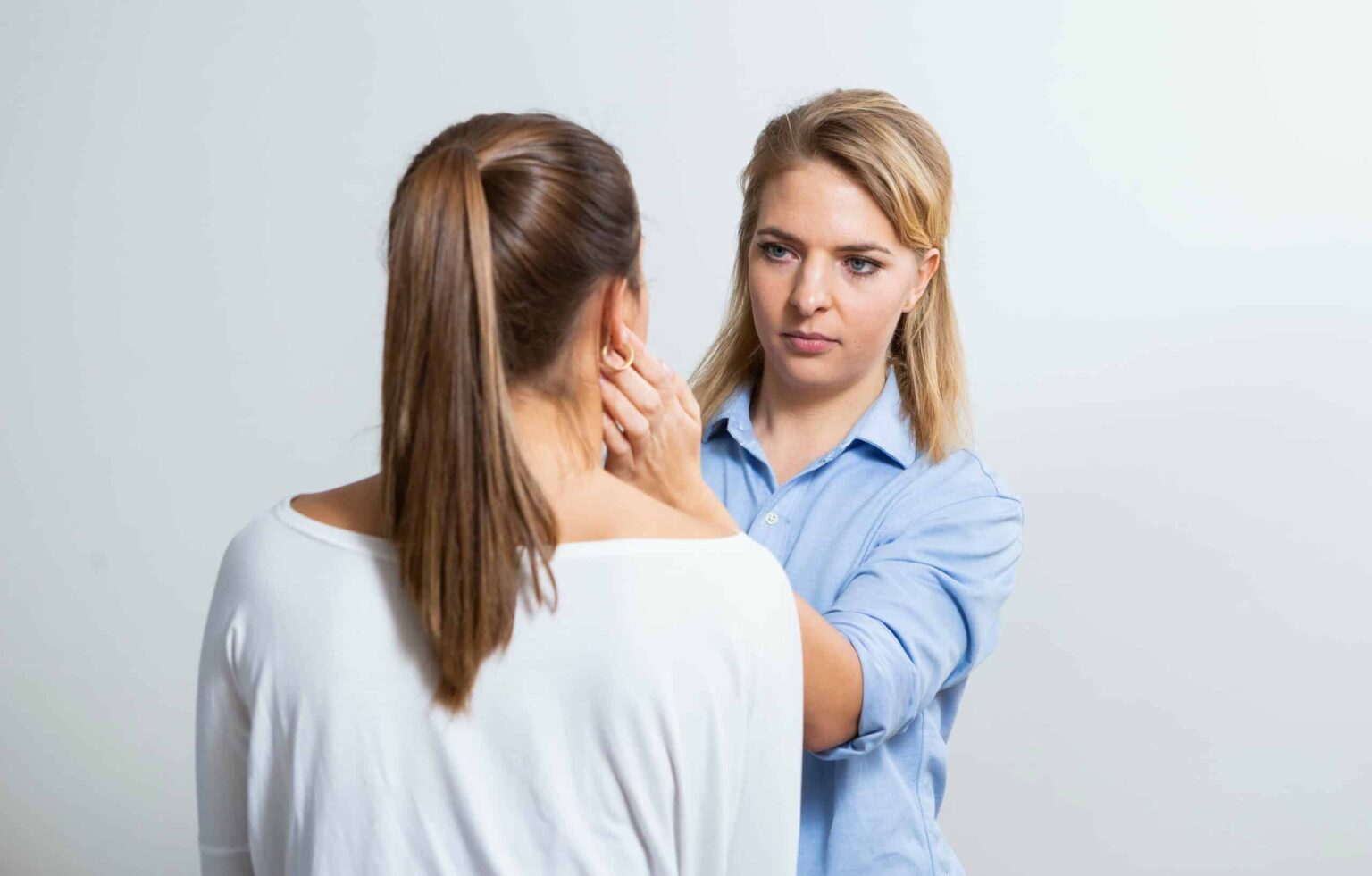
Eye inflammation
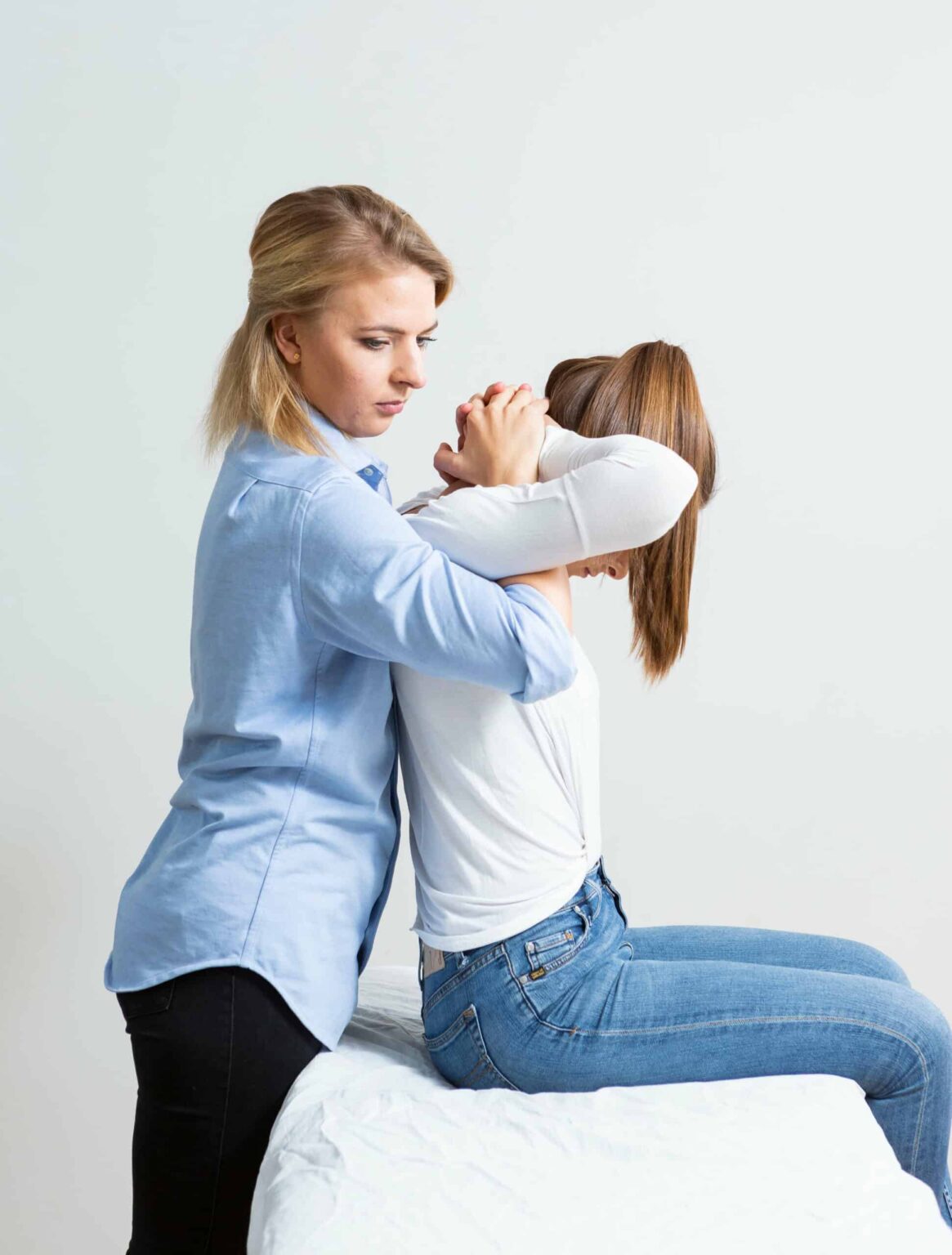
Padel injuries

Sedentary work
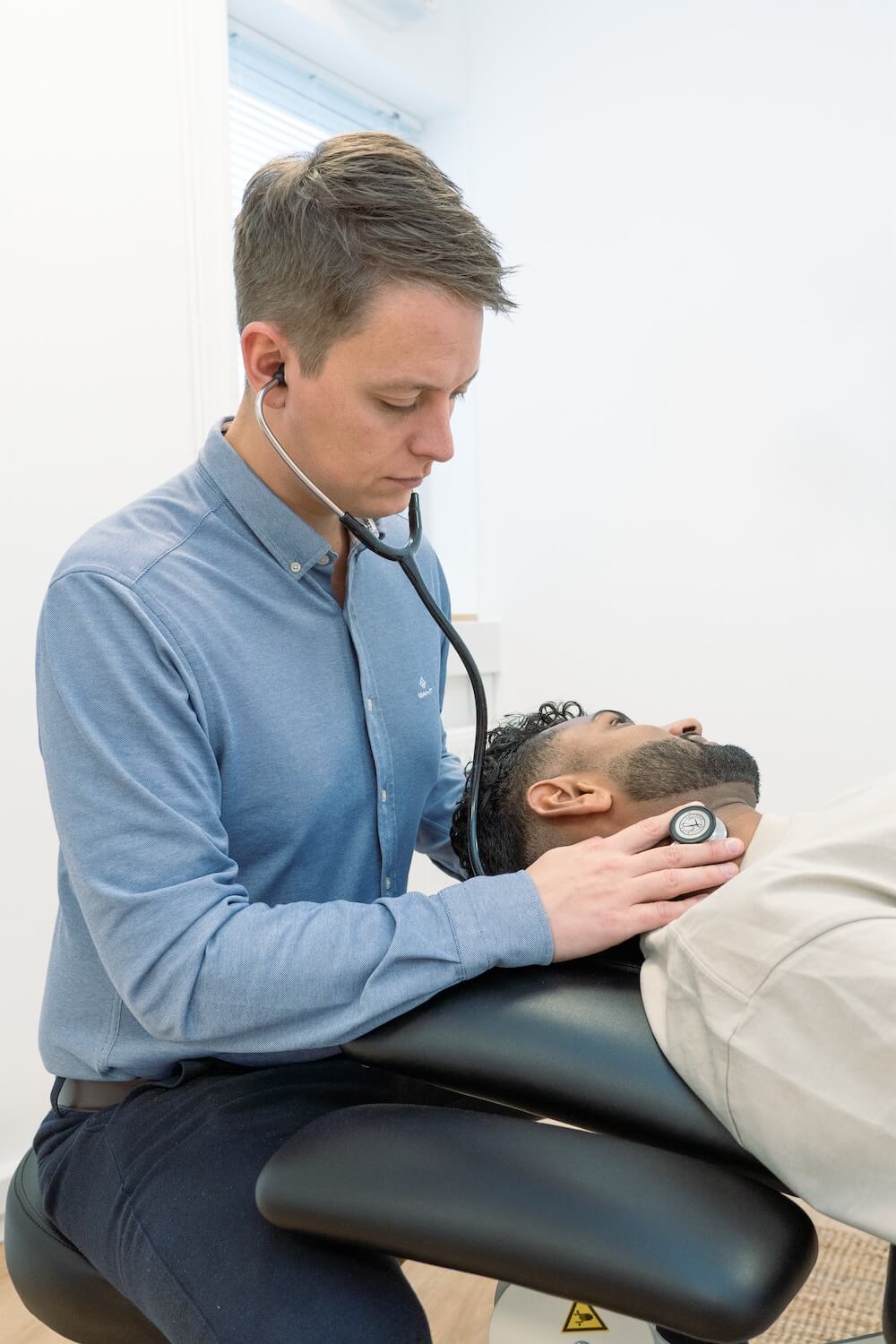
Nicotine and exercise
